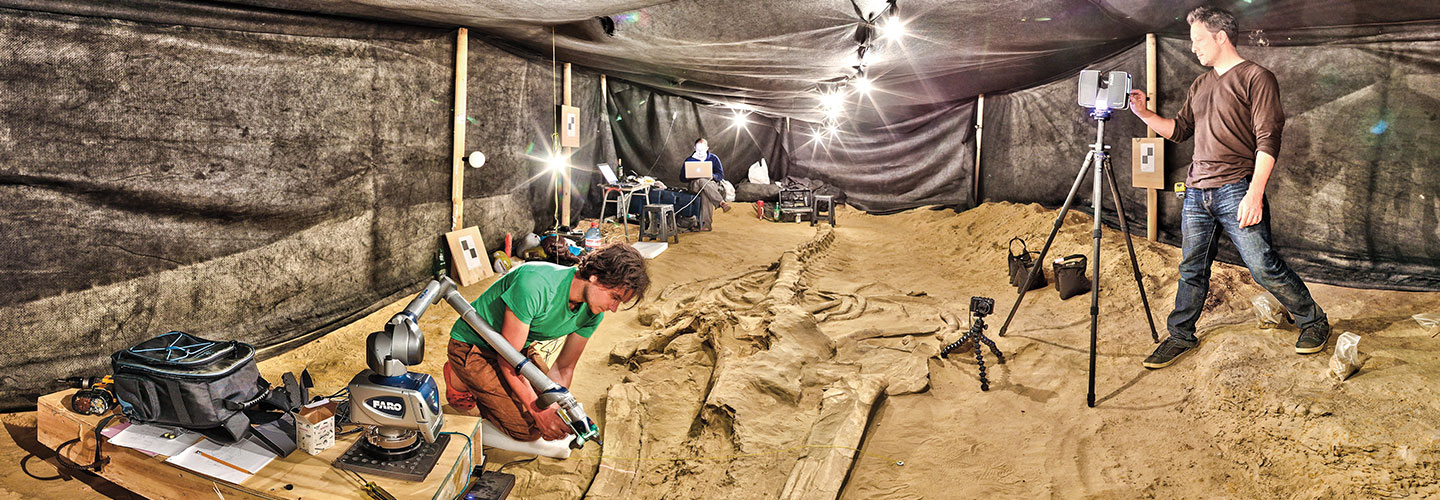A warehouse in a suburb outside of Washington, D.C., may look unremarkable from the outside. But inside, it’s packed with massive bones and preserved fossil remains. They belong to whales—the biggest creatures to have ever lived on Earth. It’s Nick Pyenson’s job to oversee this collection of giants.
Pyenson is a paleontologist—a scientist who studies ancient life on Earth—and the curator of the Smithsonian National Museum of Natural History’s collection of marine mammal fossils. It’s the largest collection of whale bones and whale fossils in the world. He uses the collection to investigate an age-old mystery: how whales have evolved, or changed over time. Pyenson spoke with Science World about the secrets these ancient remains are revealing.

